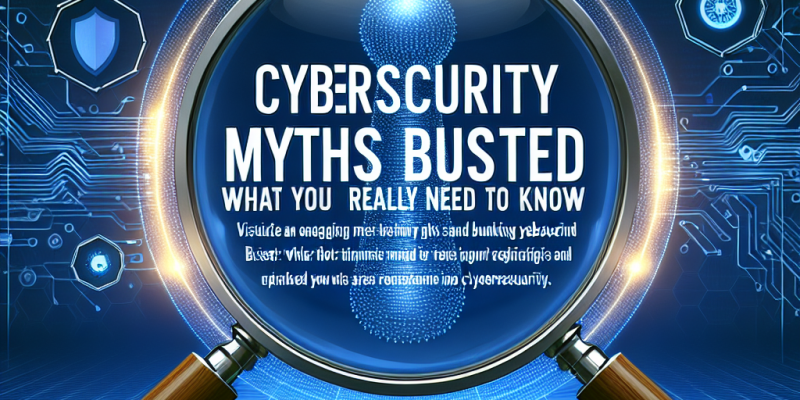Cybersecurity Myths Busted: What You Really Need to Know

In an age where our lives are increasingly intertwined with digital technology, understanding cybersecurity has never been more critical. However, many misconceptions about cybersecurity persist, leading to inadequate defenses against cyber threats. This article aims to bust some prevalent myths and equip you with the knowledge you need to stay safe online.
Myth 1: Cybersecurity is Only an IT Issue
Busted: Many non-technical employees believe that cybersecurity is solely the responsibility of their IT departments. In reality, everyone plays a role in maintaining security. Human error is often the weakest link in an organization’s defenses. Employees must be trained regularly on best practices, including recognizing phishing emails, using strong passwords, and reporting suspicious activities.
Key Takeaway:
Cybersecurity is a collective responsibility. Implement a culture of security awareness throughout your organization, and ensure everyone understands their role in protecting sensitive information.
Myth 2: Antivirus Software is Enough
Busted: While antivirus software is a valuable tool in your cybersecurity arsenal, it should not be your only line of defense. Cyber threats have evolved, with more sophisticated methods employed to bypass traditional antivirus protection. Ransomware, phishing attacks, and social engineering tactics require a multi-layered approach that incorporates firewalls, regular software updates, and user education.
Key Takeaway:
Complement antivirus software with a robust cybersecurity strategy that includes firewalls, intrusion detection systems, and ongoing employee training on threat recognition.
Myth 3: Only Large Corporations are Targets
Busted: Small to medium-sized enterprises (SMEs) often underestimate the risk they face. In fact, these organizations are increasingly targeted by cybercriminals who believe they have weaker security measures compared to larger corporations. According to recent reports, nearly 43% of cyberattacks are aimed at small businesses.
Key Takeaway:
No business is too small to be targeted. SMEs must implement effective cybersecurity measures and conduct risk assessments to protect their assets and customer data.
Myth 4: Strong Passwords are Enough
Busted: While strong, unique passwords are indeed crucial, they should not be the sole avenue of protection. With the rise of credential stuffing and other automated hacking techniques, additional security measures are necessary. Multi-factor authentication (MFA) adds an extra layer of protection that can significantly reduce the likelihood of unauthorized access.
Key Takeaway:
Implement MFA in addition to using strong, unique passwords for added security. This makes it much harder for attackers to gain access to your accounts.
Myth 5: Cybersecurity is a One-Time Task
Busted: Cybersecurity is not a “set it and forget it” endeavor. The digital landscape is dynamic and ever-evolving, with new threats emerging every day. Regular reviews of your security posture, ongoing employee training, and frequent updates to software are essential to adapt to new challenges.
Key Takeaway:
Treat cybersecurity as an ongoing process. Regularly assess and update your security measures to address new vulnerabilities and threats.
Myth 6: I’m Not Using Important Information, So I’m Not at Risk
Busted: Cybercriminals seek more than just credit card information; they also target personal data, login credentials, and other seemingly insignificant information that can be used in building profiles for identity theft or social engineering attacks.
Key Takeaway:
Every piece of information is valuable to cybercriminals. Treat all data with care and ensure you have adequate security measures in place to protect it.
Conclusion
As we navigate the digital landscape, debunking cybersecurity myths is crucial to building effective defenses against cyber threats. Empowering individuals and businesses with the correct information fosters a culture of security that is proactive rather than reactive. By understanding these common misconceptions and implementing robust cybersecurity strategies, we can create safer online environments for everyone. Stay vigilant and informed—your online safety depends on it.














